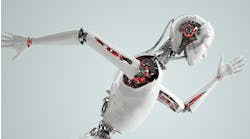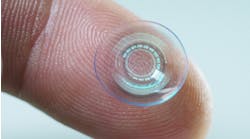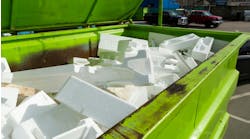Ah, November, that special time of year when energy bills grow even more out-of-control than the unsightly facial hair your lazy co-workers claim is for a good cause. You can’t very well take a trimmer to Brandon in accounts receivables unkempt cheek sweater, but with the latest in HVAC hardware and software, all you factory and plant managers can groom your building’s energy bill to a manageable level.
The main drivers are smart HVAC devices, such as Internet-enabled sensors and thermostats that provide continuous data to the user or third-party servicer. This information can then be leveraged to find ways to decrease energy consumption. This can be done in a few different ways, from traditional energy performance contracts, or a more servitized approach. Either way, overhauling your HVAC is sure to save money and maybe earn you a nice holiday bonus.
After committing to upgrades, it may not be long before you see immediate results. Trane, a subsidiary of Ingersoll Rand, worked with Hardin Medical Center in Tennessee to undergo an environment of care study reduce and execute an action plan. New lighting, boilers, and environmental controls led to a drop in energy usage by 25%. It also led to more reliable, quieter heating and cooling in the labor and delivery area.
OK, so all that new machinery and electronics isn’t free, so you’re not likely to get a Christmas ham right away. It may not cost you, though. In the case of the hospital, the solution provider fronted the capital for improvements through its Performance Agreement for Comfort from Trane (PACT). Trane gets its money back from the future energy and operational savings. The Tennessee Valley Authority also gave the medical center an $11,500 rebate for lightening the load on the grid.
Grids worldwide are going to need more relief as traditionally agrarian nations rapidly adopt a more metropolitan identity. Urban populations account for 54% of the world’s population and that number looks to climb 10% in the next five years, according to the World Health Organization. There will need to be more buildings to house and employ these people, and those buildings need to be heated, ventilated and cooled, a costly proposition.
“Buildings represent the largest energy end use in the world, consuming one third of all final energy, and half of global electricity,” writes Alex Herceg, analyst at Lux Research in a new report, Identifying Disruption in Advanced HVAC Technologies for Commercial Buildings. “In commercial buildings, almost 40% of this energy is consumed by equipment that conditions indoor environments – heating, cooling, and ventilating them.”
In the report, Herceg identified the emergence of flexible startup sensor and control companies that will leverage the Internet of Things to create more “intelligent buildings,” where the different HVAC components “talk” to each other to reach optimal efficiency.
Here are Lux’s projections for the hottest and coldest companies in HVAC:
From a business standpoint, Herceg says these companies’ hardware-only approach is being replaced a servitized one. The turnkey solution combines sensors linked to the company’s Intelligent Services Center for 24/7 monitoring, and allows immediate recognition of problems and failures.
“Companies like Trane, with its ‘comfort-as-a-service’ offering is ditching traditional all-encompassing energy performance contracts and instead offering nimble guidance that is flexible and modular,” Herceg says. “They have seen growth of almost 30% this year for this new offering.”
The major issue now is awareness.
Daintree Networks, which Lux expects to be a big winner as HVAC companies scramble to stay competitive, sponsored a recent survey of warehouse operations professionals to gauge their knowledge of IoT. Of the hundreds surveyed, only 12% were very familiar while nearly one-quarter “never heard of it.”
That’s like a movie buff never hearing of Netflix. It’s not an understatement to say IoT, especially in regulating energy use, is a complete game changer.
The applications even extend to other major energy expenditures, like lighting. Mack Technologies used Daintree to convert to LED lights in its 108,000-sq. ft facility overseen by the ControlScopeManager application. They tested it out by incrementally dropping lighting by 1%. The dimming didn’t have an noticeable impact until the 50% mark. By using the smart solution, Daintree reports Mack has a $50,000 annual savings, and saw a return on investment in three years.
Mack is also expected to receive more than $130,000 in state and federal tax credits.











